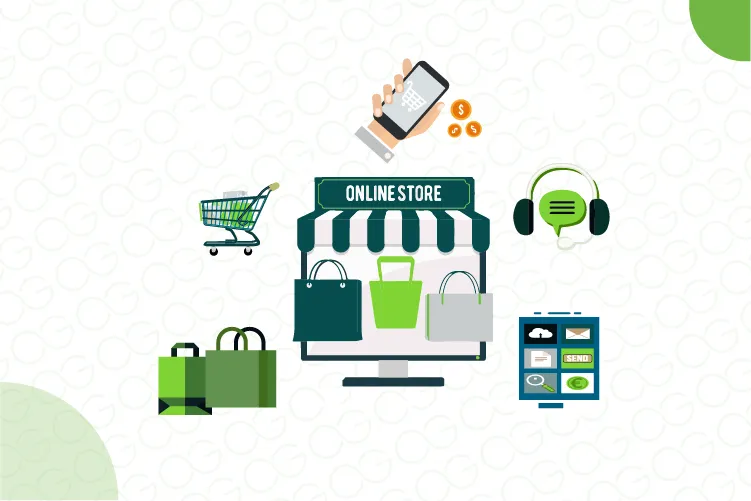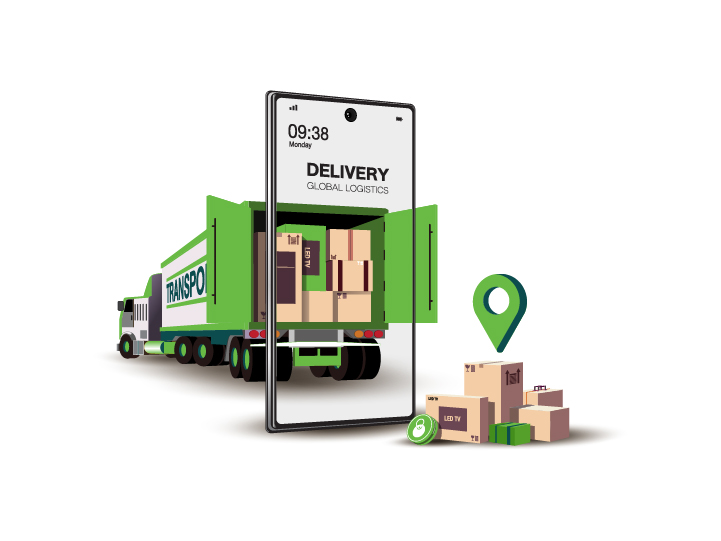Bringing your Multi-Brand Store Online - Best Practices from the Leaders

The e-commerce landscape has revolutionized the retail industry, transforming how consumers shop and interact with brands. The rise of online shopping, coupled with the convenience of digital platforms, has shifted consumer expectations toward seamless and personalized shopping experiences. Therefore, having a strong online presence with the help of Multichannel Software is no longer an option but a necessity for retailers, particularly Multi-Brand Outlet (MBOs), to have a firm standing on the internet.
MBOs, which manage different brands under one roof, have followed conventional trends to reach and interact with customers through physical storefronts. However, one of the most important rules of retail is to meet customers where they are. As consumers move towards online platforms, so should businesses.
Nonetheless, this digital shift comes with both challenges and immense opportunities. Navigating this transition involves adapting to changing consumer habits, managing new compound inventories, and maintaining a consistent brand image across platforms. However, those who can make this shift can capture a larger market share, work on the customer experience, and explore greater growth potential. The essence is to grasp the peculiarities of online retail and strategically leverage Multichannel Retail Software to create a seamless, engaging shopping experience.
In this blog, we will explore the strategies MBOs can adopt to navigate the digital transformation successfully and delve into the benefits of an omnichannel approach.

Embrace digital transformation: MBOs thrive with online innovation
The Essentials of Bringing Your Multi-Brand Store Online
To bring a multi-brand store online, one needs to understand the basics of e-commerce. Unlike physical retail where customers can physically interact with the goods and make a purchase based on first impression, online retail is based on the aesthetics of the goods, descriptions, and customer ratings. The absence of face-to-face interaction means the digital storefront must work harder to build trust and drive sales.
In a physical store, customers enjoy immediate gratification since they shop, purchase, and take their commodities home within a single trip. In contrast, online journeys are characterized by flipping through the online catalogs across different devices and waiting for the products to be shipped.
That is why to bring the multi-brand store online successfully, an organization requires a robust Multichannel Software solution that prioritizes the following key elements:
- A multi-brand online store requires more than just an appealing design. It demands the site to have clear and intuitive navigation, and a simple and easy-to-use interface so that the customer can easily locate the desired product and make a purchase.
- Prioritize secure payment gateways, efficient customer service, and clear return policies to mirror the reliability and convenience of in-person shopping. A seamless shopping experience helps foster trust and encourages repeat business.
- Integrate offline and online operations to create a seamless and high-quality experience for consumers. Integrate online and offline marketing communications; ensure consistency of price and promotion throughout the multiple channels.
- Availability, timely response, and helpful customer support with non-complicated returns policies will also support brand loyalty and enhance the overall shopping experience regardless of the store’s type or location.
In essence, the digital storefront needs to be more than a place to display the products, it should tell the story of the brand. With the help of robust Multichannel Retail Software, multi-brand store owners can successfully transition to online retail.

Adapt online or fall behind: MBOs must embrace digital evolution
Benefits of Bringing the Multi-Brand Store Online
In today’s digital age, transitioning a multi-brand store to an online platform offers a wealth of advantages that can significantly enhance its reach and efficiency.
- Business Digitization- It is the process of streamlining business operations, reducing operational costs, and enhancing efficiency. Digitization enables real-time data access, allowing businesses to make decisions and respond to market trends quickly to stay competitive.
- Incorporating Business Intelligence and Analytics Tools- One of the most important benefits of Multichannel Retail Software is the ability to use Business Intelligence and Analytics Tools. These tools provide deep insights into customers’ behavior, sales, and product performance. Retailers can use this information to refine their promotional techniques, better target their clients, and forecast future developments.
- Customer Retention- An online presence has the potential to open new ways to engage with customers for multi-brand stores. That is why through recommendations, loyalty programs, and targeted marketing approaches, retailers can increase satisfaction and develop long-lasting relationships with customers.

Case Study 1 - Vmart's Integration with Limeroad
Vmart is one of the leading multi-brand retailing chains in the Indian market, offering a wide range of fashion, lifestyle, and home products. Vmart has operated from tier-II and tier-III cities and catered to the needs of value-conscious consumers through its large store network.
Recognizing the changing trends of consumers, Vmart decided to acquire Limeroad, a popular online fashion marketplace, to extend its reach to a broader audience. This integration was planned to help Vmart improve its online presence and to capitalize on the increasing importance of e-commerce in the country. The collaboration allowed Vmart to showcase its diverse product range on Limeroad’s platform, providing customers with an easy and convenient shopping experience.
The retailer was able to capitalize on Limeroad’s strong technology platform which included easy-to-use mobile applications and a reliable supply chain system. Vmart also focused on optimizing its product listings, ensuring accurate product descriptions, high-quality images, and competitive pricing to attract online shoppers generating thousands of orders. Next it integrated its offline stores to Limeroad and hence started converting these orders to fulfilment from store omnichannel orders.
Lessons Learned from Vmart's Integration
Implementation of new systems or technologies particularly in an existing framework is normally a difficult process. Vmart's recent integration offers several valuable lessons:
- Importance of Choosing the Right Online Platform- The choice of platform should align with the target clients, offer scalability, and provide the right tools to enable effective management of online operations. The advantage of partnering with a popular and established e-commerce portal like Limeroad helped Vmart tap into the existing traffic, gain visibility, and quickly establish itself in the online market. It did not have to build an ecommerce site from scratch. Through integration with Limeroad, Vmart was able to reach a wider audience beyond its physical stores, including customers in regions where it did not have a physical presence. This collaboration also helped Vmart leverage the marketing and promotional events of Limeroad to expand its visibility and boost its online business.
- Going omnichannel as early as possible: Vmart did not waste years fulfiling orders only from its warehouse. This would have been a disaster as many orders came from places where the retailer already had a physical store. Hence for maximum stock efficiency, omnichannel retail technology should be adopted fast.

Transform your multi-brand store online with Multichannel Retail Software
Case Study 2: Shopper Stop's Online Strategy
Shopper Stop is one of India’s prominent multi-brand retail chains and has established itself as a household name over the years. By offering a diverse range of products including fashion, beauty products, home accessories, and many more, it has been providing a luxurious shopping experience for the customers. The brand's strong offline presence, with numerous stores across the country, has been a significant factor in its success. However, with the advancement of the internet and the emergence of e-commerce, it realized the importance of developing a strong online presence with the help of Multichannel Retail Software to cater to the changing needs of its clients.
Key strategic initiatives by Shopper Stop to strengthen its online presence:
Shopper Stop exemplifies how traditional brick-and-mortar retailing firms can go online by focusing on integration, technology, and personalization. Their strategy not only improved the company’s online image but also helped strengthen its leadership in the intensively competitive retail industry. Let's understand how:
- Integration of Online and Offline Channels: The platform focused on creating a seamless experience across both its online and offline channels. By leveraging Multichannel Software, the brand ensured that customers could enjoy a consistent shopping experience, whether they were browsing products online or visiting a physical store.
- Investment in Technology: The retailer invested in advanced retail software solutions to manage its online operations efficiently. This included upgrading their e-commerce platform to handle high traffic, integrating with various payment gateways, and supporting a user-friendly interface that mimicked the in-store experience.
- Expanding Digital Marketing Efforts: Recognizing the importance of reaching customers through various digital touchpoints, it ramped up its digital marketing efforts. This included targeted social media campaigns, search engine optimization (SEO), and email marketing to attract and retain online customers.
- Advantages of a Robust Retail Software Solution in Managing Complex Operations: Shopper Stop's investment in robust Multichannel Retail Software was crucial in streamlining operations. The software enabled efficient inventory management, seamless integration of various sales channels, and improved customer service. It also provided the scalability needed to handle the growing demands of an online store.
- Real-Time Customer Information Updates: The platform used real-time data to allow the brand to offer highly personalized experiences to its customers. By understanding individual preferences, browsing history, and purchase patterns, the platform tailored its marketing messages, promotions, and product recommendations.

Transform your multi-brand store for a seamless online experience with Ginesys
How Ginesys One Supports Multi-Brand Retailers
Ginesys One provides robust solutions for multi-brand retailers looking to establish and manage their online stores efficiently. With its comprehensive Ginesys One suite of tools, this Multichannel Retail Software enables retailers to create fully functional e-commerce platforms that cater to the unique needs of every customer. Let's understand how the platform supports multi-brand retailers:
- Seamless Online Store Syncing: The integration allows for a smooth transition when establishing an online presence, minimizing disruptions to ongoing operations. By syncing online and offline operations, the software ensures that all aspects of the business, from inventory to order fulfillment, are harmonized across all sales channels.
- Automating Orders: It excels in automating various sales functions, from order processing to invoicing, allowing retailers to focus on strategic growth rather than day-to-day operations. Automation of sales streamlines operations and significantly reduces the risk of human error, ensuring that transactions are processed accurately and efficiently.
- Synchronizing Data: Real-time data synchronization is a critical component of Ginesys' offering, particularly for multi-brand retailers managing large inventories and diverse customer bases. By ensuring that sales data is updated in real-time across all channels, the Multichannel Retail Software helps retailers maintain optimal inventory levels, preventing stockouts and overstock situations.
- Real-Time Customer Information Updates: Keeping customer information up to date across all channels is vital for delivering a personalized and cohesive shopping experience. The platform facilitates real-time updates of customer data, ensuring that any changes in customer profiles, purchase history, or preferences are instantly reflected across the retailer's systems. This capability allows retailers to maintain a single, unified view of each customer, regardless of where they interact with the brand.

Best Practices for a Successful Offline-to-Online Transition by Ginesys
Embarking on an offline-to-online transition is a significant step for any multi-brand retailer. However, this shift requires careful planning and execution. Here are some best practices to ensure a smooth and successful transition:
- Planning and Strategy Development: A well-thought-out online strategy forms the backbone of this journey. It's essential to align the online goals with the overall business objectives, considering factors like market positioning, customer demographics, and competitive landscape. Setting realistic goals and key performance indicators (KPIs) is crucial. These goals should be specific, measurable, achievable, relevant, and time-bound (SMART), ensuring that the strategy of the Multichannel Software solution remains focused and results-driven.
- Choosing the Right Technology Partner: Selecting the right e-commerce platform and retail software solution is another pivotal decision in the offline-to-online journey. With its comprehensive retail software solution, Ginesys stands out as an ideal choice for multi-brand retailers. The platform provides end-to-end support for inventory management, order processing, and customer relationship management. Its seamless integration capabilities with e-commerce platforms ensure a unified experience across all sales channels.
- Ensuring a Seamless Omnichannel Experience: To achieve this, integrating the online and offline sales channels is paramount. This integration ensures that the customers enjoy a unified shopping experience, whether they’re browsing online or visiting the physical stores. Ginesys excels in delivering a seamless omnichannel experience. With its advanced Multichannel Retail Software, businesses can synchronize online and offline operations, ensuring that every customer interaction is consistent and personalized.

Ginesys: Seamlessly integrating and automating multi-brand retail success
As we wrap up our journey, it's clear that venturing into the digital realm is imperative for continued growth and success. Embracing the digital shift broadens market reach, enhances customer engagement, and streamlines operations.
Whether you're just starting your online journey or looking to optimize your existing operations, Ginesys is here to guide you through the complexities of the digital retail landscape. The Multichannel Retail Software is crafted to make your online transition not just smooth but seamless, setting you up for success in this competitive landscape.
So, why wait? Dive into the future of retail with Ginesys. Contact us today and let us help you turn your online ambitions into reality.
